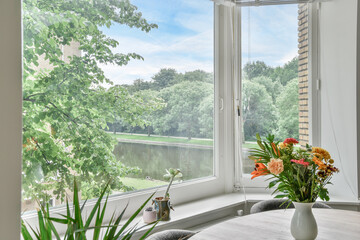Clean windows brighten every space. They allow natural light to flow freely and enhance comfort. Yet, maintaining spotless glass requires precision and skill. That’s where local window cleaning services make a difference.

Local Window Cleaning Services In Helena understand the unique environmental conditions of their area. They recognize how weather, dust, and humidity affect window surfaces. Their familiarity ensures efficient cleaning methods. Local expertise translates to better results every time.
Unlike large-scale services, local cleaners provide personal attention. They build trust through consistent, quality service. Clients receive customized care rather than standardized routines. This approach creates long-term satisfaction and reliability.
Many homeowners underestimate the importance of clean windows. Dust and residue can block sunlight and dull interior spaces. Regular cleaning restores brightness and improves ambiance. A clear window can transform how a room feels.
Local professionals use safe and eco-conscious cleaning solutions. They avoid harsh chemicals that can harm glass and surroundings. Their approach combines effectiveness with environmental care. Cleanliness and sustainability can coexist beautifully.
The tools they use often go beyond simple squeegees. Advanced equipment ensures streak-free finishes and thorough polishing. Attention to corners and edges creates a flawless look. The goal is to make each pane gleam like new.
Dirty windows can also damage property value over time. Grime buildup may stain or corrode surfaces. Regular cleaning prevents costly repairs or replacements. Maintenance is a smart investment for long-term appeal.
Local window cleaning services adapt to various property types. From small homes to tall commercial buildings, they manage every challenge. Their versatility comes from experience and dedication. Each job is approached with the same care and focus.
Homeowners often struggle to reach high or awkwardly positioned windows. Local cleaners are equipped with proper safety gear and techniques. They handle elevated work with confidence and caution. Safety remains their top priority.
Businesses benefit greatly from sparkling windows. Clean glass creates a positive impression on clients and employees. It signals professionalism and attention to detail. A clear view reflects the values of a well-managed space.
The rise of eco-friendly practices has shaped modern window cleaning. Many local services now use water filtration systems that minimize waste. They recycle materials and reduce chemical runoff. Clean windows no longer come at nature’s expense.
Regular maintenance also extends the lifespan of window glass. Dirt particles can scratch surfaces if left unattended. Gentle but thorough cleaning preserves transparency and strength. Protection through care saves money over time.
Local window cleaners often schedule services around client needs. Flexibility ensures minimal disruption to home or work routines. They understand that convenience is part of good service. This responsiveness builds trust and loyalty.
Rainwater and pollutants can leave marks that normal wiping can’t fix. Professional cleaning removes mineral deposits and streaks effectively. The result is glass that stays clear longer. Skilled hands ensure deep, lasting cleanliness.
Another advantage of local cleaners is rapid response. Being nearby allows them to accommodate urgent requests. Whether after a storm or an event, they’re quick to help. Accessibility is one of their strongest assets.
Many local cleaners maintain close ties with the community. They rely on word-of-mouth recommendations and repeat clients. This motivates them to maintain high standards. Their reputation is built through visible, spotless results.
Window cleaning also improves energy efficiency. Dirt can block natural light and increase reliance on artificial lighting. Clean glass enhances illumination and reduces energy use. This subtle benefit adds up to noticeable savings.
In workplaces, clear windows influence mood and productivity. Sunlight enhances focus and reduces eye strain. Employees feel more connected to their environment. Cleanliness, though often overlooked, boosts morale.
For residential settings, freshly cleaned windows enhance comfort. Families enjoy unobstructed outdoor views and brighter rooms. It’s a simple improvement with a big emotional effect. Clean windows make homes more inviting.
Local professionals also inspect frames and seals during cleaning. They can spot early signs of wear or leakage. Preventive action saves property owners from major repairs. Attention to detail adds extra value to their service.
Many services now use purified water systems that leave zero residue. This technology removes minerals and impurities before application. The result is crystal-clear glass without streaks or spots. Science and craftsmanship work hand in hand.
Hiring local window cleaners supports small businesses and local economies. It keeps resources circulating within the community. Every cleaning appointment contributes to regional growth. Supporting local talent strengthens collective prosperity.
Clean windows can even affect mental well-being. Bright light improves mood and promotes calmness. A clear view of the outdoors relieves stress. Something as simple as a clean window can uplift the spirit.
The process itself is surprisingly intricate. Professionals use precise movements to avoid streaks or smudges. Timing and technique matter more than many realize. Mastery comes from training and experience.
Local services also understand seasonal changes that affect windows. Pollen, rainwater stains, and dust vary throughout the year. They adjust cleaning methods to suit each season’s challenges. Their adaptability ensures consistent results.
Homeowners who try DIY cleaning often miss subtle details. Improper wiping can leave residues or scratches. Professional care eliminates these risks. The difference is visible even at a glance.
Some services offer maintenance plans for year-round clarity. Scheduled cleanings prevent buildup before it starts. Clients enjoy continuous brightness without reminders. It’s convenience packaged with reliability.
The equipment used in professional cleaning has evolved significantly. Lightweight poles and microfiber tools minimize damage risk. Modern techniques prioritize efficiency and precision. Window cleaning has become both an art and a science.
Local window cleaners often integrate digital scheduling for clients. Online bookings and reminders make the process seamless. Technology enhances communication and accountability. The service experience becomes smoother and more transparent.
Clean windows also influence architecture’s visual appeal. They highlight structural lines and accentuate exterior design. Whether classic or modern, every style looks sharper through clean glass. Maintenance preserves architectural beauty.
Windows serve as barriers and connectors to the outside world. Maintaining them ensures both function and aesthetics. Regular cleaning preserves this balance. The result is clarity in every sense of the word.
For commercial properties, cleanliness can even impact revenue. Customers notice every detail, including glass clarity. A spotless façade encourages trust and engagement. The visual impression converts into business confidence.
In rental properties, window maintenance helps attract tenants. Clean, well-kept windows suggest care and reliability. It makes spaces more desirable to prospective occupants. First impressions truly start with clear glass.
Some cleaners also provide additional care for window frames. Removing dirt from corners prevents decay and rusting. Maintenance goes beyond the glass alone. It’s a holistic approach to window health.
Local expertise becomes vital in regions with varying air quality. Dust-heavy or coastal zones demand specific cleaning intervals. Professionals familiar with these conditions tailor their approach. Their knowledge ensures maximum efficiency.
Safety remains at the heart of every professional cleaning session. Workers use harnesses, ladders, and stabilizers for protection. Clients are assured that every precaution is followed. Professional ethics and safety always align.
The artistry of window cleaning lies in its attention to reflection. Every surface interacts with light differently. Skilled cleaners ensure balanced shine without distortion. The outcome enhances both view and appearance.
Some homeowners delay cleaning due to misconceptions about cost. In reality, local services are often affordable and flexible. The value of their results outweighs the investment. Clean windows bring returns beyond aesthetics.
For high-rise properties, specialized equipment handles elevation challenges. Water-fed poles and secured lifts ensure complete coverage. Expertise prevents accidents and ensures precision. Vertical clarity demands specialized skill.
Local services also promote long-term environmental responsibility. Using biodegradable agents and water-saving methods reduces impact. They align cleaning with sustainable living practices. Clean glass meets conscious living standards.
Customer satisfaction remains their primary motivation. Feedback drives constant improvement and innovation. Clients who witness consistent results become loyal advocates. Service excellence fuels business growth naturally.
Even during unpredictable weather, local cleaners remain dependable. They monitor conditions to determine optimal cleaning times. Flexibility allows them to deliver results without compromise. Adaptability is key to their continued success.
Training also plays a crucial role in their quality. Professional window cleaners often undergo technical instruction. They learn safety, product handling, and advanced techniques. Skill development ensures consistent, superior service.
Modern cleaning solutions now integrate anti-static properties. This innovation helps repel dust after cleaning. Glass stays cleaner for longer periods. Technology continues to redefine cleanliness.
Local cleaners often operate with transparency and accountability. They maintain open communication and fair pricing. Their reliability builds community trust. Integrity is the foundation of lasting service.
Window cleaning might seem simple, but it’s essential for preservation. It protects glass from decay and prolongs durability. It enhances beauty and functionality simultaneously. Regular cleaning maintains this delicate balance.
The sense of pride after each cleaning is mutual. Clients enjoy gleaming views, and professionals see the fruits of their craft. Clean windows symbolize diligence and care. They embody the connection between people and their spaces.
In the end, local window cleaning services do more than wash glass. They restore light, clarity, and balance to every structure. Their commitment transforms ordinary views into extraordinary experiences. Through their craft, transparency becomes both literal and symbolic.
